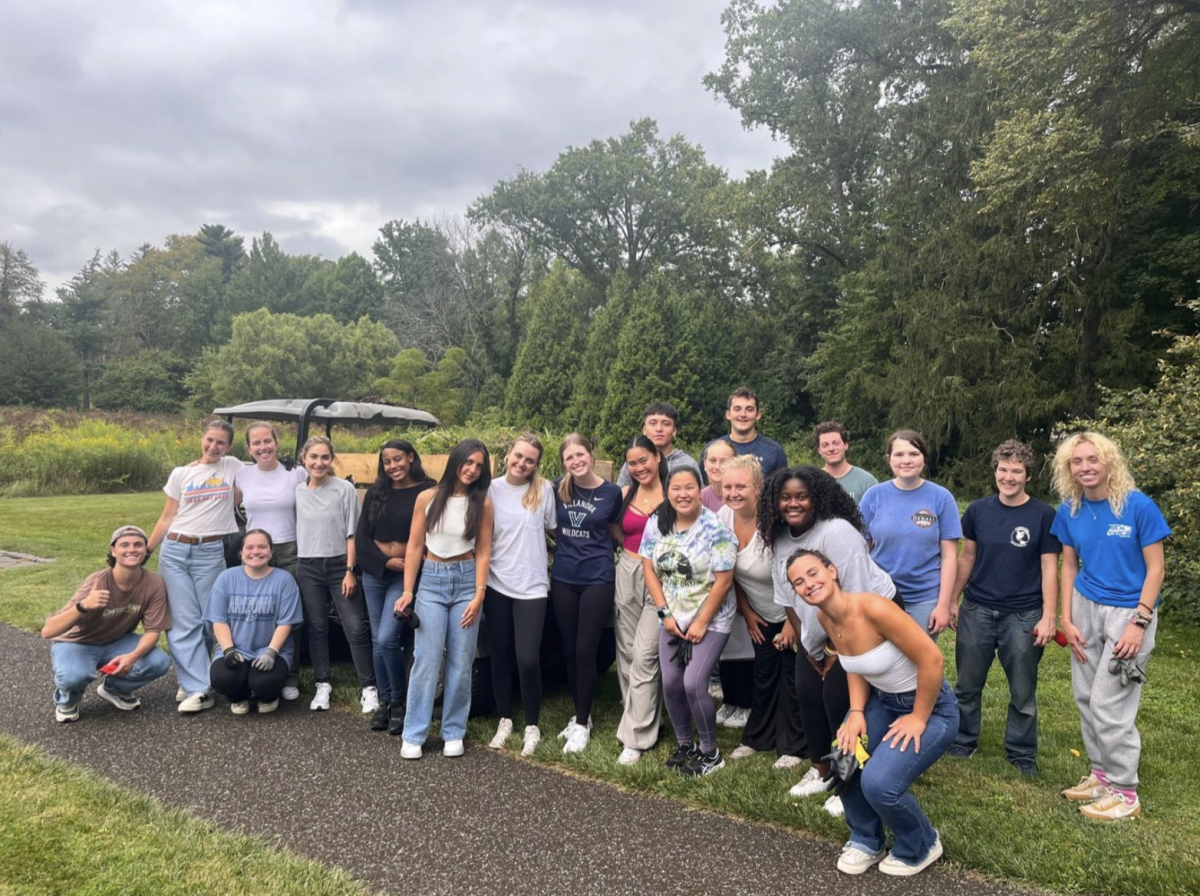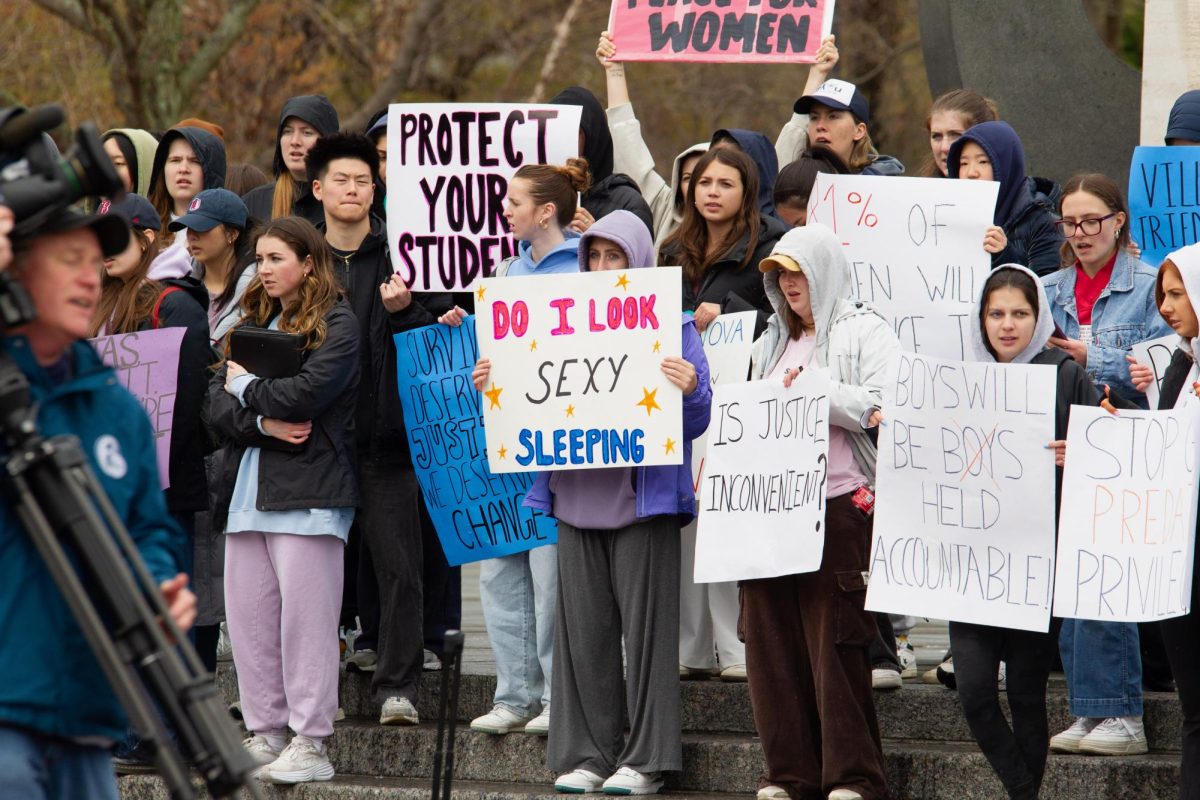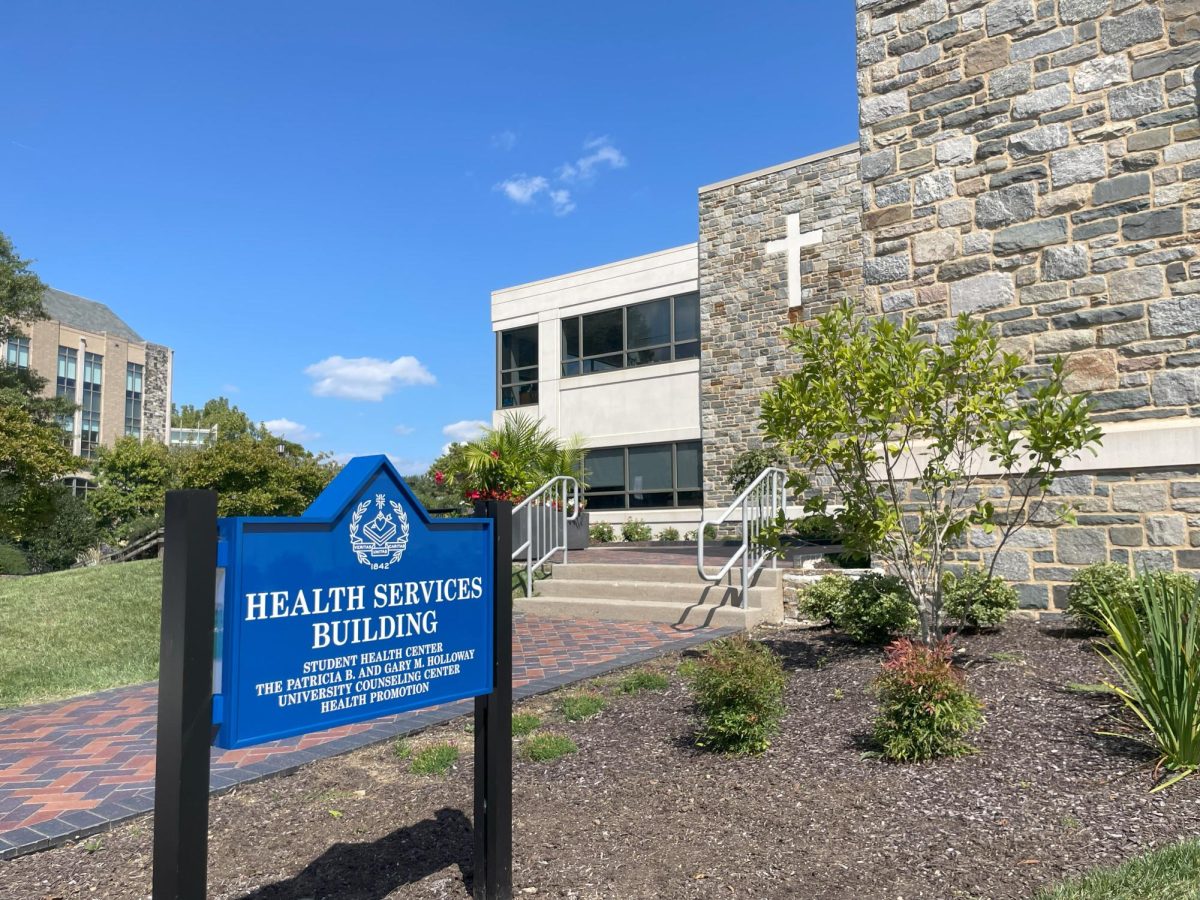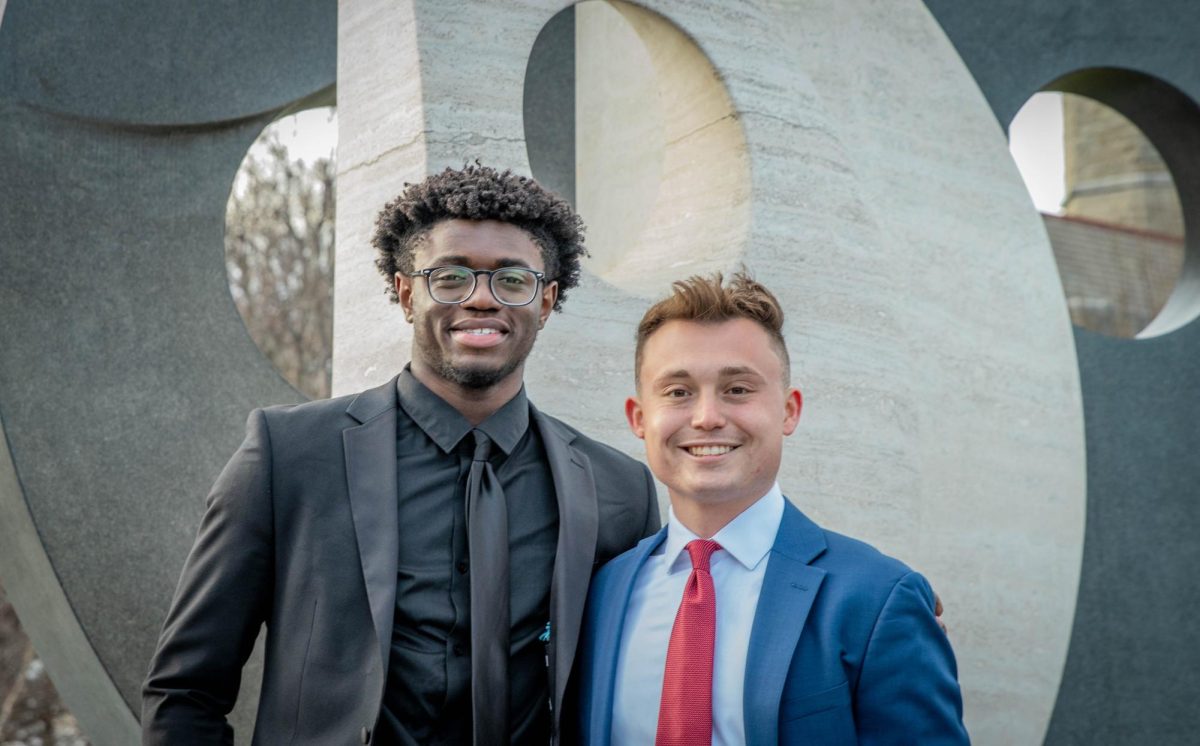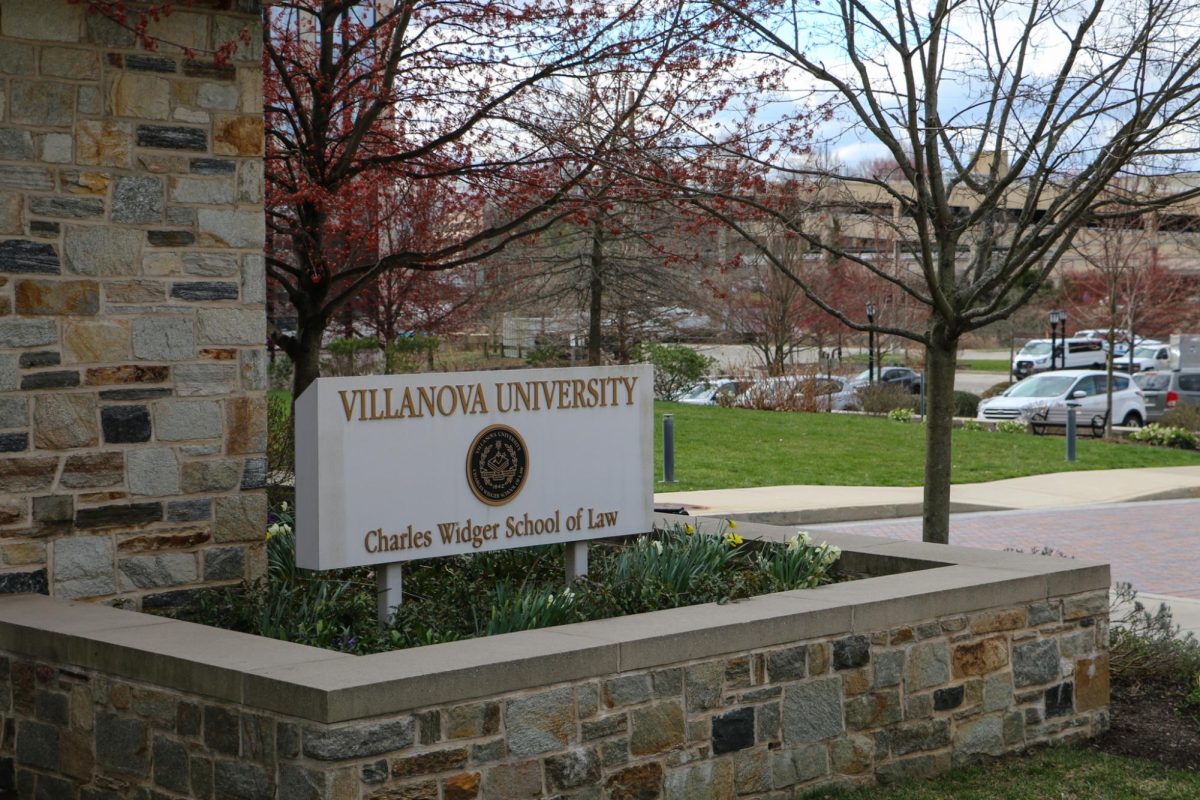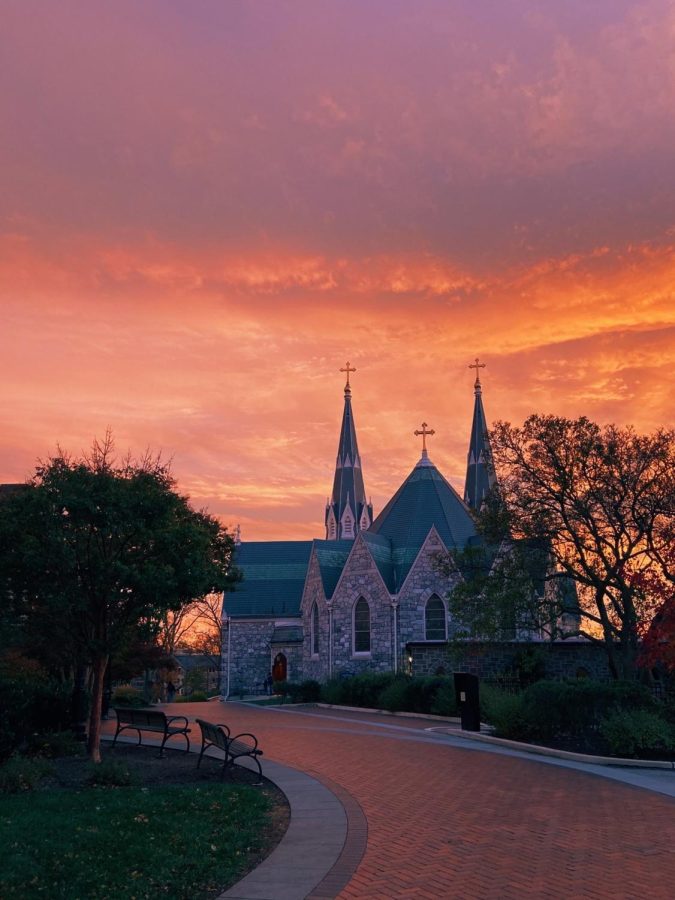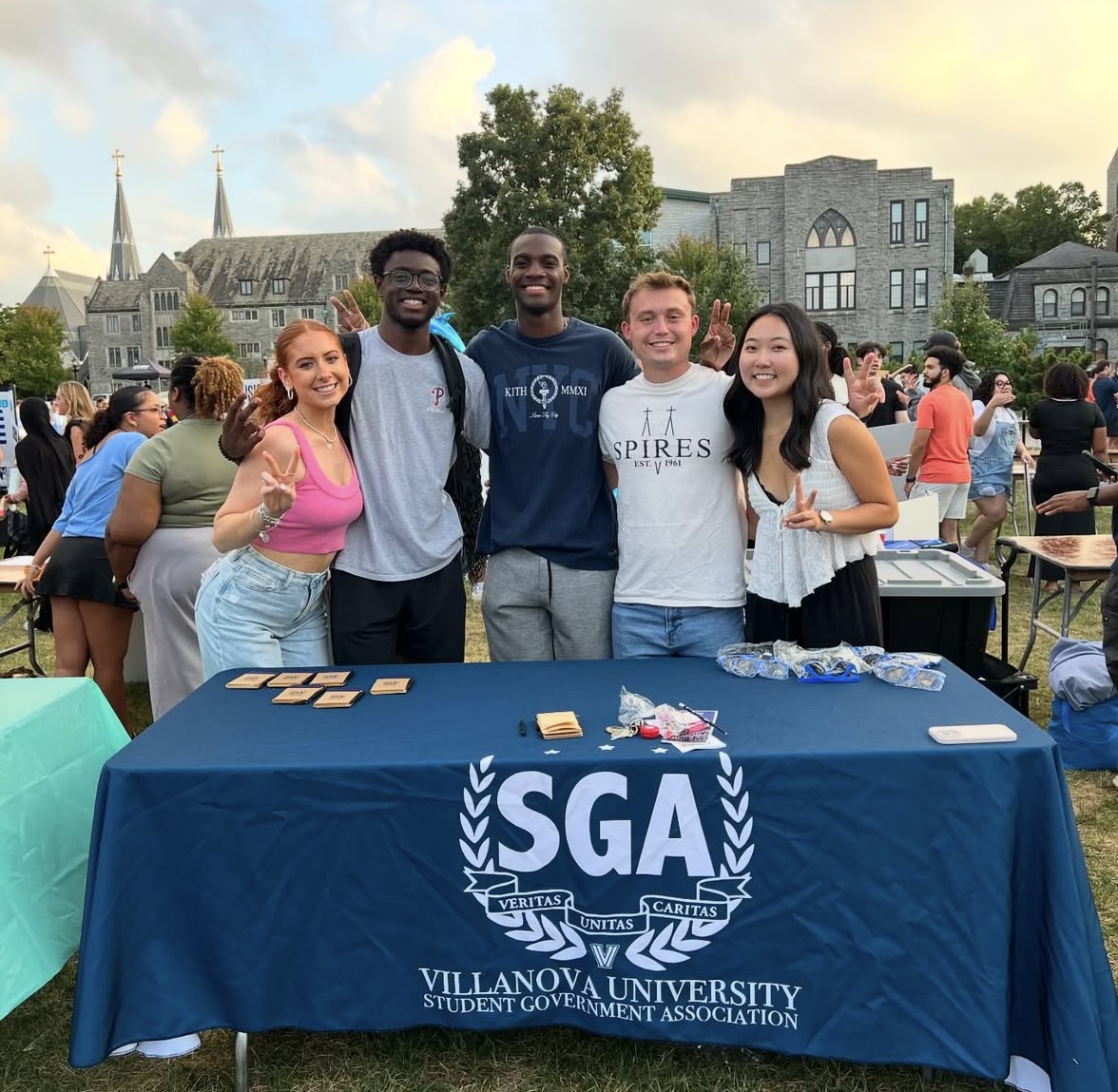Students in Villanova’s environmental sustainability lab this semester have been implementing ecological footprint plans to reduce their carbon footprints and engage in more sustainable habits. The goal of this course is to draw from a variety of disciplines to build an understanding of the concept of sustainability and to work towards developing solutions to challenges that the environment is facing today. Students also collaborated with community partners, such as Villanova’s waste and recycling management, Stoneleigh Gardens and the Discovery Center in Philadelphia.
Through labs, lectures and hands-on projects, students are advancing their understanding of the ecological, technological, economic, political and ethical realms of environmental sustainability. Students collectively produced their own definition of sustainability, using resources and equitable practices in a balanced way that allows ecosystems, economies and societies to flourish without depleting from one another for future generations and the present day. The Environmental Footprint Project is a hands-on assignment for students to reflect on their personal resource use and work towards sustainable life changes to do their part in saving the environment.
Students started with four separate environmental areas by analyzing their carbon footprint, diet, water use, and plastic use. Each reflection served as an opportunity for students to acknowledge their impact on global consumption of resources. For the Ecological Footprint Project, students were given the choice to implement a personal lifestyle change or a collective group action. Most students chose to implement a personal lifestyle change. Despite most students having majors outside of the STEM field, these areas of sustainability and self-reflection are important for all students.
It is difficult to say if Villanova efficiently advertises its sustainability efforts. Villanova has proposed a University sustainability plan, on-campus resources and environmental conservation efforts, but do students know about them? Students in this class understand the potential barriers to being environmentally sustainable like a lack of time, convenience and knowledge of resources. Three resources students learned about were Villanova’s campus garden, the Wildcat Wardrobe and the “put waste in its place” search engine.
Villanova’s website states the purpose of the campus garden is to serve as an educational, cross-curriculum resource, while modeling sustainable urban agriculture and enriching the greater Villanova community. The garden will provide research opportunities, integration into class curricula and social outreach through community partnerships. The campus garden is located behind Driscoll Hall and is open for students.
The Wildcat Wardrobe serves as a clothing recycling hub sponsored by Villanova’s Career Center. It allows students to try on business-type clothing in dressing rooms and take the items home for free. Items offered include suits, jackets, pants, dresses, blouses, skirts and shoes. Thrifting and second-hand shopping are great ways of conserving environmental resources and providing a cheap outlet for students to shop.
Villanova’s Waste and Recycling website provides students with a search engine to input types of waste like batteries, hardcover books, plastic bottles and mattresses. The website then informs students of a solution to know where to properly dispose of their waste while on campus.
To reflect on their personal sustainability habits, students in the class each set a lifestyle change to implement. Junior, Grace Maresca, focused on limiting her water-use by taking shorter showers.
“I have managed to keep my shower time to five minutes or less,” Maresca said. “Although I was successful, it was more difficult than I expected, and I had to practice before carrying it out, as five minutes lapsed much faster than I thought.”
She also mentioned how listening to certain songs helped her time out the shower and keep herself on track.
“As I showered, I had more time until the song ended, and I realized I needed to finish up quickly,” Maresca said.
Students were asked to reflect on how they felt implementing their lifestyle change, and how their efforts may impact the global use of resources. Maresca acknowledged sacrificing aspects of convenience and comfort.
“I had to overcome the personal barrier of having to give up enjoying a long hot shower after a hard day,” she said. “Overall, this lifestyle change did not require much physical effort, only the willpower to be more efficient while showering. If I could have done something differently, I would have had everything ready before turning on the water for my shower.”
Maresca is hopeful that she can continue practicing this lifestyle change and try to implement more changes in the future.
“I am proud of the efforts I made in this lifestyle change,” she said. “It challenged me and tested my patience.”

